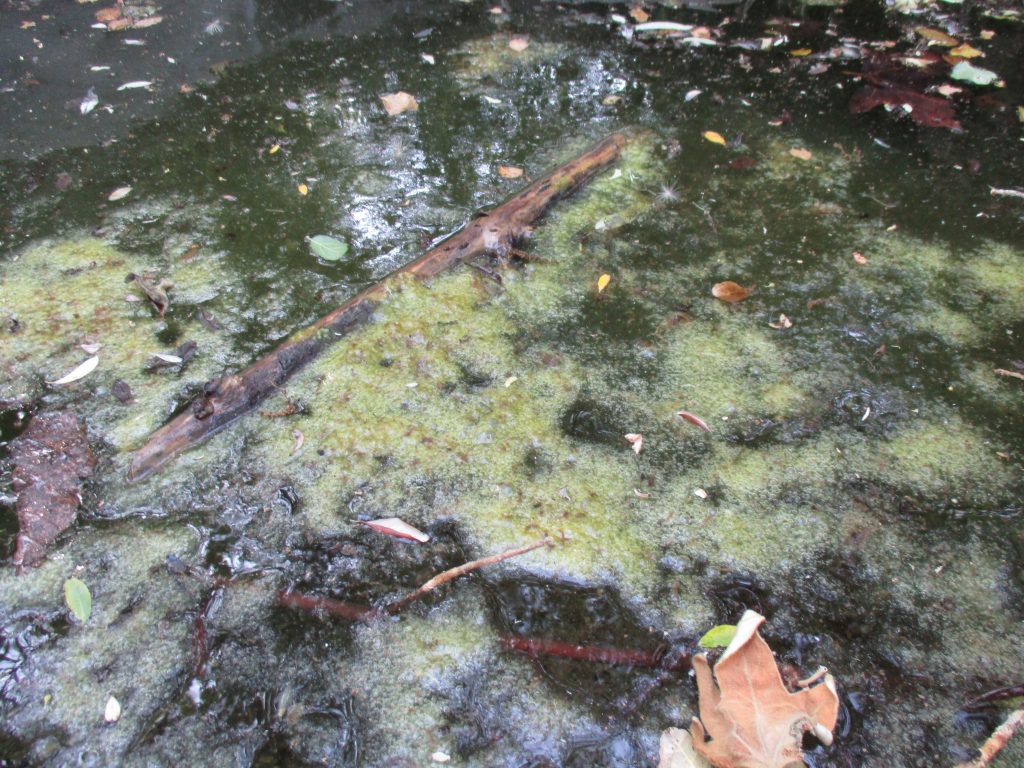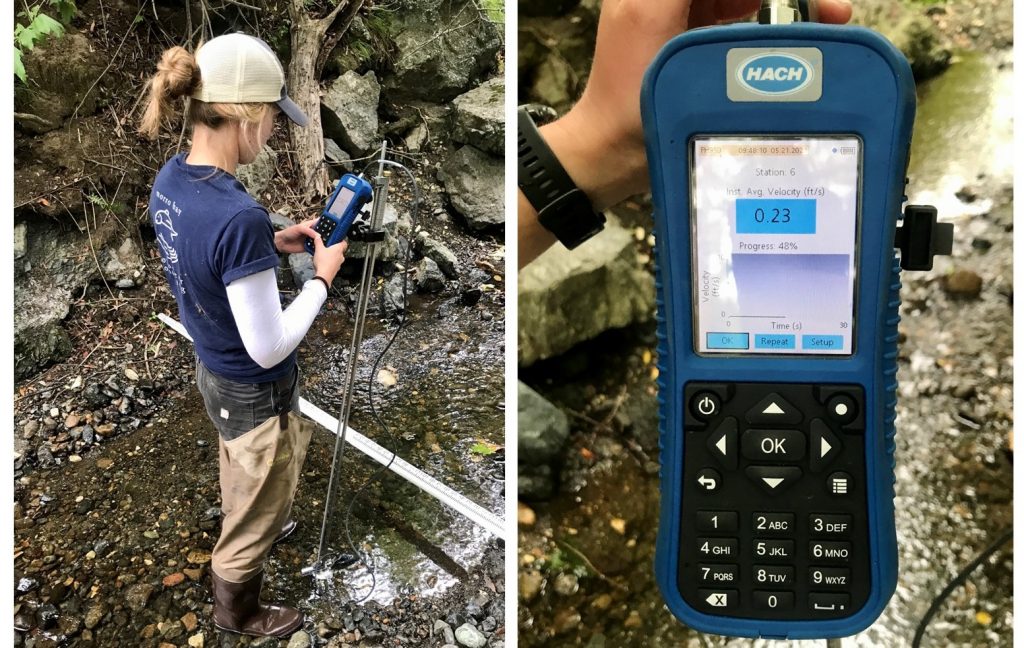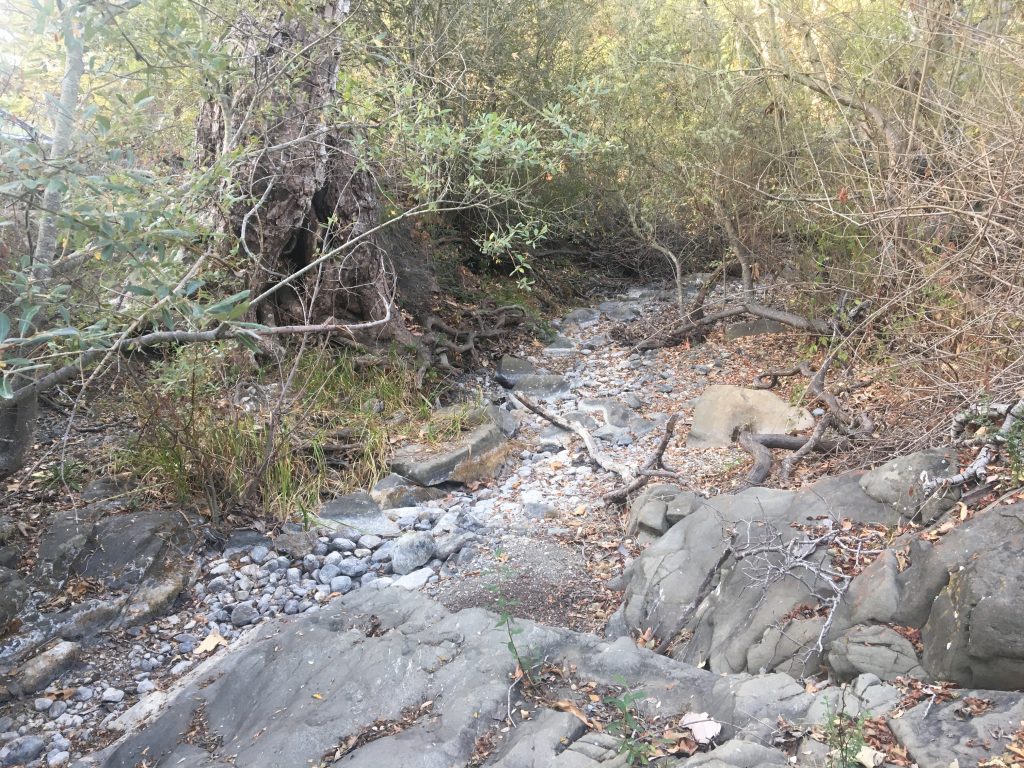Things are heating up this summer!
According to a local weather station monitored by California Irrigation Management Information System (CIMIS), the average air temperature increased from about 54°F in April and 57°F in May, to over 62°F during June.
In our local creeks, we also have noticed a similar climb in stream temperatures. A water temperature logger on San Luisito Creek recorded a maximum seven-day rolling average of 57.7°F (14.3°C) during May, and a maximum seven-day rolling average of 59.3°F (15.2°C) during the first half of June.
For more information on how we track temperature in our local creeks, check out this blog post about continuous temperature monitoring.
Algal blooms in our watershed
Warmer water temperatures and lower flows are often accompanied by algal blooms, which occur in both fresh and marine environments.

While algal blooms can occur naturally with seasonal changes, we tend to see higher densities of blooms where high levels of nutrients are present. Nutrients like nitrogen and phosphorus can accelerate algal growth, causing certain water bodies to become eutrophic, meaning highly enriched, and potentially hypoxic or anoxic.
Hypoxia describes a waterbody with a very limited amount of available dissolved oxygen, and anoxia describes a waterbody with no measureable dissolved oxygen present.
For more information on algal blooms, check out this video from NOAA.
Low flow monitoring
The Morro Bay watershed contains both perennial and temporary streams. A perennial stream describes a creek or river that maintains year-round flow, while a temporary stream dries in the summer.
As such, some of our monitoring locations stay flowing year-round, while others, like Dairy Creek (a temporary stream near El Chorro Regional Park), will go completely dry during the summer.
At this time of year, our perennial creeks are reaching base flow. This means that without recent rainfall, the creek continues to trickle, utilizing water from underground aquifers instead of runoff generated from rainfall.
Oftentimes, these low flows (i.e. a trickle) can be too low for us to accurately measure. Our current flow monitoring equipment has a reliable velocity reading when submerged in water approximately 1.8 inches or deeper. Because most of our smaller creeks don’t meet this criteria during the height of the summer, we are unable to accurately measure flow for those sites. Instead, staff and volunteers photo document flow conditions.

Job opportunities with Watershed Stewards Program
While the Estuary Program does not have any current available openings, one of our partnering organizations, the Watershed Stewards Program (WSP) has extended their recruitment for the upcoming 10 ½ month service term.
WSP is currently recruiting for both WSP Corpsmembers (serving at various locations across the state) and for WSP Team Leaders (serving in San Luis Obispo or Fortuna, CA). Through this service term, Corpsmembers have a unique opportunity to serve with environmental organizations across California, including with the Morro Bay National Estuary Program. Applications for all WSP positions are due by July 18th, 2021.
Click here for more information about serving with WSP.
Volunteer opportunities
In the next month, we will begin the process of recruiting new water quality volunteers for our roster. If you’re interested in volunteering with us, please start by filling out an interest form on our website at: www.mbnep.org/volunteer/
Help protect and restore the Morro Bay estuary
- Donate to the Estuary Program and support our work in the field, the lab, and beyond.
The Estuary Program is a 501(c)3 nonprofit. We depend on funding from grants and generous donors to continue our work. - Support us by purchasing estuary-themed gear from ESTERO. This locally owned and operated company donates 20% of proceeds from its Estuary clothing line and 100% of Estuary decal proceeds to the Estuary Program. Thank you, ESTERO!
- Purchase items from the the Estuary Program’s store on Zazzle. Zazzle prints and ships your items, and the Estuary Program receives 10% of the proceeds. Choose from mugs, hats, t-shirts, and even fanny packs (they’re back!) with our fun Estuary Octopus design, our classic Estuary Program logo, or our Mutts for the Bay logo.
